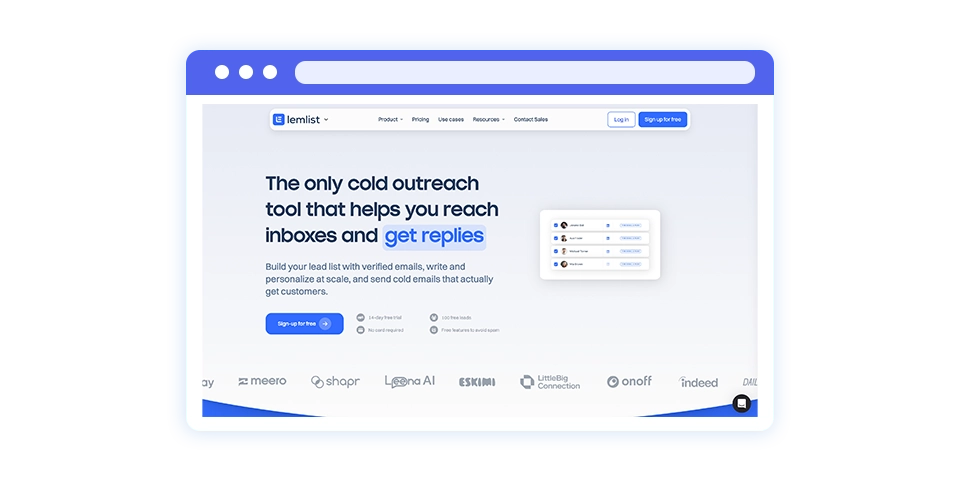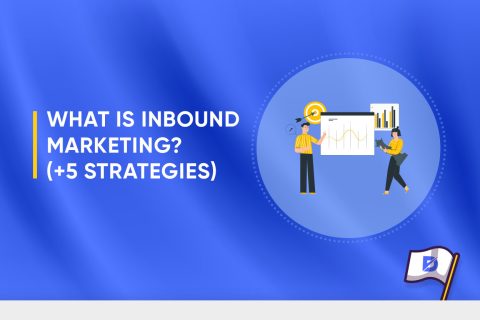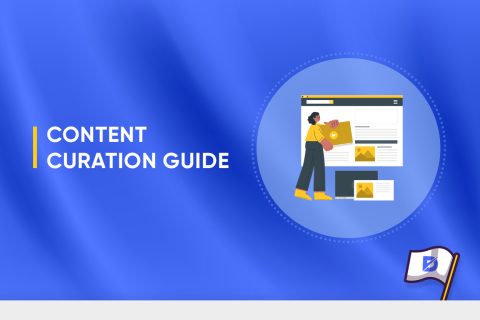Cold emailing is a great way to reach potential customers with whom you don’t have a pre-existing relationship. But getting your emails opened and read can be difficult. That’s why it’s important to follow a few basic steps when creating your cold email campaigns. Effective cold emailing is all about creating a real connection and offering something valuable to the person you’re reaching out to. Not everyone will respond right away, and that’s okay. Sometimes it takes a few tries. Building good connections takes time, but with persistence and a focus on being helpful, you’ll increase your chances of success.
What is Cold Email?
Cold emails are messages directed to individuals with whom you have no prior acquaintance. This is the easiest explanation, but there is a huge amount of email science and sales pitch behind it. Great cold emails create emotion and build connections. They are designed to get results, using some tried and tested techniques to stimulate action. In most cases, cold emails are used to raise awareness about your business, brand, product, or service. Cold emails are all about numbers. The more you submit, the more likely you are to be successful. But before you start writing, you need to develop solid emails, understand the format, and focus on your USP.
Simply put, a cold email is a message you send to a recipient you’ve never contacted before. The main goal is to spread the word about your products or services, establish a business connection, and help the user convert, i.e. make a purchase as the final step.

Why You Should Consider Cold Emails?
Cold emails can be a valuable tool for various reasons, particularly in a business or professional context. Cold emails can be really helpful, but it’s important to use them legally and follow privacy rules like GDPR. Also, making interesting and personal messages is key to making your cold email campaigns work better.
- Lead Generation: Cold emails are an effective way to generate leads. By reaching out to potential customers or clients who may have shown interest in similar products or services, you can expand your customer base.
- Cost-Effective: Compared to traditional marketing methods, cold emails are a cost-effective way to promote your products or services. There are minimal costs associated with sending emails, making it a budget-friendly option for businesses of all sizes.
- Targeted Outreach: With cold emails, you can target specific individuals or businesses that fit your ideal customer profile. This allows for more personalized and relevant communication, increasing the chances of a positive response.
- Time-Saving: Cold emails can be automated to a certain extent, saving you time on manual outreach. With tools like email templates and automated follow-ups, you can streamline your communication process and focus on other aspects of your business.
- Data-Driven Approach: Many cold email marketing tools provide analytics that allow you to track the performance of your cold email campaigns. You can analyze metrics such as open rates, click-through rates, and conversion rates to refine your approach and improve results over time.
- Global Reach: Cold emails enable you to connect with potential customers or partners globally. This is especially important for businesses that operate on an international scale or those looking to expand their market reach beyond local boundaries.
- Introduction of New Products/Services: If you’re launching a new product or service, cold emails can be an effective way to introduce it to your target audience. You can provide information, highlight key features, and create curiosity to generate interest.
- Brand Awareness: Consistent and targeted cold email campaigns contribute to building brand awareness. Even if a buyer doesn’t convert immediately, they will be aware of your brand’s existence. This way, they can refer others to you or convert themselves after a while.
- It is informative: Quality cold email copy carries a lot of necessary information that can persuade a reader to convert. Note that you can overlay these types of messages with a variety of media content, including images, presentations, and videos.

What Is the Difference Between Cold Email and Email Marketing?
While both cold emails and email marketing involve using emails as a communication tool, their specific purposes, target audiences, and approaches distinguish them within the broader spectrum of email-based outreach and marketing strategies.
- Cold Email:
- Definition: Cold email refers to unsolicited emails sent to individuals or businesses who haven’t expressed prior interest in your products or services.
- Purpose: The main goal of cold emails is often to initiate contact, introduce your offerings, and generate interest or leads.
- Target Audience: Cold emails are typically sent to individuals who may not be familiar with your brand, and the recipients may not have opted to receive communication from you.
- Email Marketing:
- Definition: Email marketing is a broader strategy involving the use of emails to promote products, and services, or build relationships with an audience. It encompasses a range of email communications, not just initial outreach.
- Purpose: Email marketing involves building a relationship with an audience over time. It includes sending newsletters, promotional offers, educational content, and more to a targeted list of subscribers.
- Target Audience: The recipients of email marketing messages are often individuals who have willingly subscribed or opted in to receive emails from a particular sender. They have shown interest in the brand or its offerings.
Key differences between email and cold email marketing:
Permission:
- Cold Email: Typically sent without prior consent, as recipients haven’t opted in or subscribed.
- Email Marketing: Sent to a list of subscribers who have been permitted to receive emails.
Relationship Building:
- Cold Email: Focuses on initial contact and generating interest from new prospects.
- Email Marketing: A continuous strategy aimed at nurturing relationships, providing value, and retaining existing customers.
Content and Frequency:
- Cold Email: Often contains introductory content, aiming to grab attention and encourage a response.
- Email Marketing: Involves a variety of content types, including newsletters, promotions, and educational materials. Frequency is typically more regular.
Optimization:
- Cold Email: Focuses on optimizing the first point of contact to elicit a response or further engagement.
- Email Marketing: Involves ongoing optimization based on subscriber behavior, open rates, click-through rates, and other metrics.
Are Cold Emails Considered Legal?
The legality of sending cold emails depends on the jurisdiction and the specific regulations in place. In many countries, there are laws governing electronic communications and data protection that you need to comply with when sending cold emails.
Some key considerations about legality are listed below:
- Permission: In many regions, you are required to have the recipient’s consent before sending commercial emails. This is often known as opt-in consent. The recipient should have willingly subscribed or agreed to receive emails from you.
- Anti-Spam Laws: Many countries have anti-spam laws that regulate unsolicited electronic communications. These laws often require senders to include an opt-out mechanism (unsubscribe link) in their emails and provide accurate sender information.
- Privacy Regulations: Depending on the region, you may need to comply with privacy regulations such as the General Data Protection Regulation (GDPR) in the European Union or the CAN-SPAM Act in the United States. These regulations outline rules for the collection, processing, and protection of personal data.
- Business-to-Business (B2B) vs. Business-to-Consumer (B2C): The rules may vary for B2B and B2C communications. In some cases, B2B cold emails may have fewer restrictions, but it’s essential to research and understand the specific regulations applicable to your situation.
- Unsolicited Commercial Emails: Sending unsolicited commercial emails without proper consent may violate anti-spam laws and lead to penalties, including fines.

Principles of Cold Emailing
The principles of cold emailing involve important guidelines to make your emails more effective and considerate. It’s crucial to be polite and show respect when reaching out to new contacts. Some principles are listed below:
- Be Relevant: Make your message about what the person cares about. People pay more attention when the email is about things they find interesting.
- Personalize: Use the person’s name and mention things that make the email just for them. Personalized emails show you put in effort and make a connection.
- Keep It Clear: Make your message easy to understand without confusion. Clear emails help people get what you’re saying and do what you want them to do.
- Show Value: Explain how your email benefits the person. People are more likely to respond if they see the value in what you’re offering.
- Get Permission: Make sure it’s okay to email the person. Asking for permission builds trust and keeps your emails legal.
- Easy to Unsubscribe: Give people a simple way to stop getting your emails. It respects their choice and follows anti-spam rules.
- Follow-up: Send a reminder if they haven’t responded. It increases the chance of getting a reply, especially if they missed your first email.
- Be Professional: Keep your emails polite and businesslike. A professional tone makes a good impression.
- Try Different Things: Test different parts of your emails and learn from the results. Learning what works helps you improve your emails over time.
What Are Some of the Best Cold Email Tools?
Sending cold emails can be tricky, but there are many tools to make it easier. You just have to pick the right tool that helps with everything – making emails personal, sending follow-ups, and keeping track of how well your emails are doing.

GMass
GMass is a helpful tool for sending cold emails. It works right from your Gmail and is used by big companies like Uber and Google. But it’s not just for big businesses; even if you’re working alone or have a small startup, GMass is a good choice. The best part is, it’s easy to use. Just add it to your Chrome browser, sign in with your Google account, and you’re ready to go.

SalesHandy
SalesHandy is a tool that helps with selling and emailing. It lets you send personalized emails to lots of people and automatically follow up with them. There’s a feature to make sure you don’t send too many emails in a day, and it checks if email addresses are real before sending emails.

Reply.io
Reply.io is a tool that helps sales teams connect with potential customers using various methods like email, calls, Linkedin, SMS, and WhatsApp. It makes it faster for sales teams to reach out, and it connects with popular CRMs like Salesforce and HubSpot to save time on entering data manually.

Lemlist
Lemlist supports you send cold emails to specific groups of people. It’s often used by small businesses and software companies to make it easier to find potential customers. With Lemlist, you can personalize your emails a lot by using data and even adding personalized pictures to your emails. It makes sending cold emails more effective. Just like other similar tools, you can put details from a file into an email template to make it personal.

QuickMail
Quickmail assists sales teams with their email outreach. It automates follow-ups, spreads emails across multiple inboxes to avoid spam filters, and provides reports on opened emails and reasons for unsubscribing. The tool also analyzes the sentiment of email replies and allows teams to run outreach campaigns using emails, phone, SMS, and Slack. Quickmail integrates with CRMs like HubSpot and Pipedrive, as well as other tools, and supports unlimited split testing for email campaigns. Additionally, it uses AI to automate administrative tasks like handling unsubscribe requests and following up based on prospects’ replies.
Frequently Asked Questions About
A compelling subject line, personalized greeting, clear and concise message, a call-to-action, and contact information are key elements to include in a cold email.
Personalize your emails, focus on relevance, clearly communicate value, and adhere to ethical practices. Testing and analyzing performance can also help improve effectiveness.
Monitor metrics such as open rates, click-through rates, and conversion rates. Analyze campaign reports to understand recipient engagement and optimize future outreach efforts.





No comments to show.